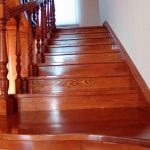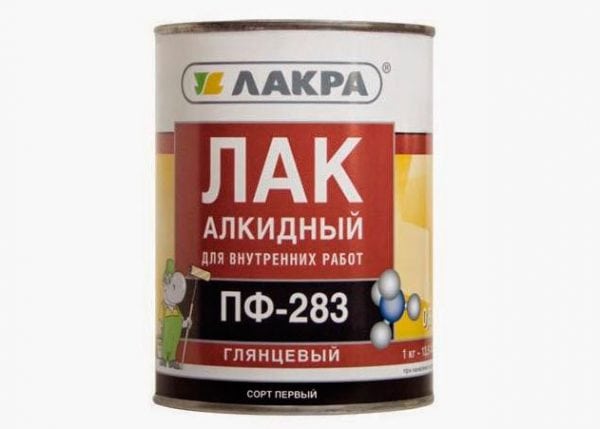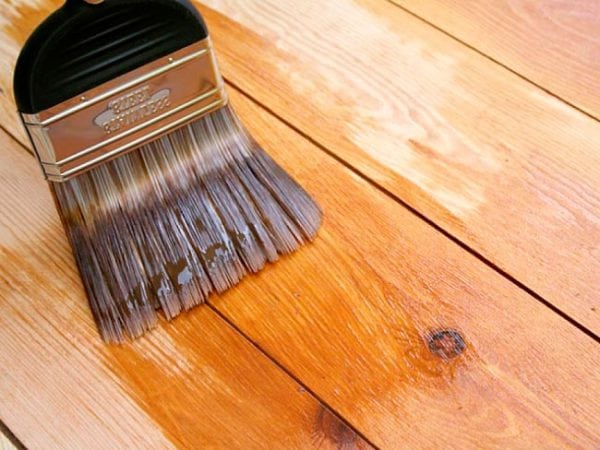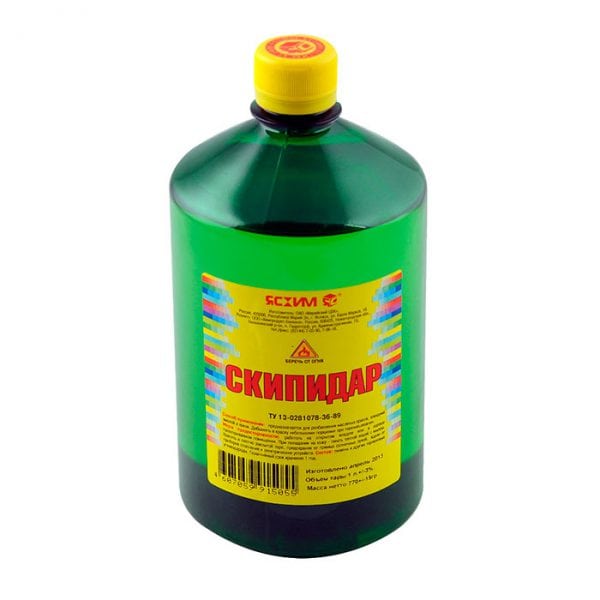Almost all private houses have stairs, and most often they are made of wood. To give the design a more aesthetic appearance, it is painted or varnished. Varnish looks more presentable and it is he who is usually preferred. How to apply varnish to the stairs will be discussed below.
- Types of varnishes for staircases
- Varnish and wood
- Varieties of varnishing stairs
- Instructions for applying varnish
- Useful Tips
- Conclusion


Types of varnishes for staircases
Varnish is a solution, after which a protective film appears on the surface. It can be matte, semi-gloss or glossy.
There are several types of paints and varnishes used for varnishing stairs:
- Alcohol solutions of resins. They are characterized by rapid drying (up to 2 hours) and ease of varnishing. The disadvantage of such paints and varnishes (LKM) - low resistance to moisture.
- Nitrocellulose, consisting of a mixture of colloxylin, plasticizer and resin. Differ in moisture resistance.
- Formaldehyde. They are considered a good choice for staircases because of their resistance to wear. This varnish includes formaldehyde resins that adhere very well to wood. The disadvantage of formaldehyde coatings is the persistent odor that stays in the room for quite some time.
- Alkyd. Despite the deep penetration into the wood structure, such coatings do not differ in resistance to mechanical loads. Very soon the surface wears out, so only stairs that are not used very often can be treated with alkyd varnishes.
- Water-based coatings. They can be one-component (include acrylic) or two-component (acrylic and polyurethane). Water-based varnishes, especially two-component ones, are well suited for stair surfaces.
- Solvent-based coatings. A two-component polyurethane varnish based on organic solvents is the best choice among all available options in terms of coating reliability.

Varnish and wood
When selecting paintwork materials, the species of wood from which the staircase is made should be taken into account. If we are talking about conifers (pine, spruce, etc.), you need to keep in mind that such wood contains a lot of resin. It is better to cover such stairs with opaque varnish.
If the design is made of oak, beech, ash, hornbeam or an exotic wood species, it is more correct to give preference to colorless coatings, which favorably emphasize the beauty of the wood structure.
to contents ↑Varieties of varnishing stairs
There are two types of varnishing of staircases: opaque and transparent.
Opaque coating is achieved by applying the appropriate varieties of coatings on the stairs. They will hide wood defects.Moreover, the opacity is achieved not only due to a special varnish, but also due to the application of several layers of material. If the choice is opacity and the surface has previously been varnished or painted, the old coating must be removed. Then carry out priming and puttying, and only then can we start varnishing.
Transparent coating is ideal for wood with a beautiful structure and no defects. Typically, opaque varnish is treated with staircases made of oak, beech and exotic woods. Putty is needed here only to mask individual minor defects. The general rule is to apply coatings on a clean, dry surface, so that there is no spreading of the material.
Note! Different varieties of varnish differ in the degree of toxicity. However, in any case, it is necessary to use a respirator, protective gloves and goggles. The room should be ventilated.

Instructions for applying varnish
To perform varnishing you need:
- bristle brushes (for liquid formulations);
- round hair brushes (for thick coatings);
- varnish;
- turpentine.
Advice! If paintwork materials are of liquid consistency, the length of the pile should be greater than the diameter of the brush. If we are talking about thick compositions, the pile on the contrary should be shorter.
Even before starting work, the brush should be dipped in varnish, and then clean it in turpentine.
Step-by-step instructions for varnishing stairs:
- we clean the staircase from the old layer of paint or varnish;
- remove dust;
- if necessary, primer and putty the surface;
- stir varnish;
- when applying paintwork, we hold the brush perpendicular to the surface being treated, and not under a slope;
- first we apply varnish in wide strips, and then we level the applied layer;
- make sure that no villi remain on the surface, and if necessary, remove them;
Advice! It is recommended to stir the composition not only before the start of work, but also in its process. It is important to prevent the occurrence of large particles at the bottom.

Useful Tips
- It is more convenient to apply varnish to the stairs when the structure is disassembled, especially if different shades are planned.
- For stairs, only special wear-resistant varnishes are applicable. Stair varnishes are more dense in comparison with parquet varnishes (which is very convenient when varnishing with a brush). They spread less, are characterized by increased strength. However, such varieties of coatings are more expensive. And you can buy such a varnish far from every store - after all, the demand for such compositions is not so great.
- If it is not possible to purchase a special staircase paintwork, you can opt for a high-quality parquet composition.
- LKM on organic solvents (optimally - two-component polyurethane) is preferable to composition based on water.
- As for manufacturers, it is better to choose a varnish from a well-known European company. In this segment, Finnish, Swedish and German companies have proven themselves well.
- Staircase - refers to structures with increased surface wear, so when choosing between a glossy, matte and semi-matt option, it is better to focus on the latter, since traces of wear are least visible on it.
- If you need tinting the tree in a dark color, it is more correct to use not a colored varnish (despite the fact that it is easier), but use a stain and then apply a transparent coat. The meaning of the recommendation is that the stain impregnates the wood a couple of millimeters, and even when the surface wears out, its color remains the same. When the need arises, it will be enough just to apply a colorless protective layer. But if the surface is lacquered with colored varnish, then after it is erased, bare wood will appear, and the steps will have to be sanded again.Otherwise, the tree becomes covered with spots.
Note! Stain should be bought only imported and professional purpose. Such compounds are rarely sold in construction stores (as they are usually used in furniture factories) and their cost is high.
- When choosing a shade, care should be taken, since on a demo sample the varnish may have a slightly different look compared to the stairs. Therefore, at first (for testing) it is worth buying paintwork materials in the smallest packaging.
Advice! The stain can be either liquid (if it is based on alcohol), or thick or even in the form of a gel (if produced on water or an organic solvent). It is more convenient to work with a thick consistency, but the stain on alcohol is absorbed deeper, which is especially important for such an intensively worn surface as a ladder
to contents ↑Conclusion
Ladder varnishing is a responsible job, both from the point of view of the correct selection of coatings and the correct varnishing. In this regard, perhaps the right option is to involve a specialist. One, if you wish and due diligence, can do this work on your own, and if you follow the recommendations, everything will work out.




